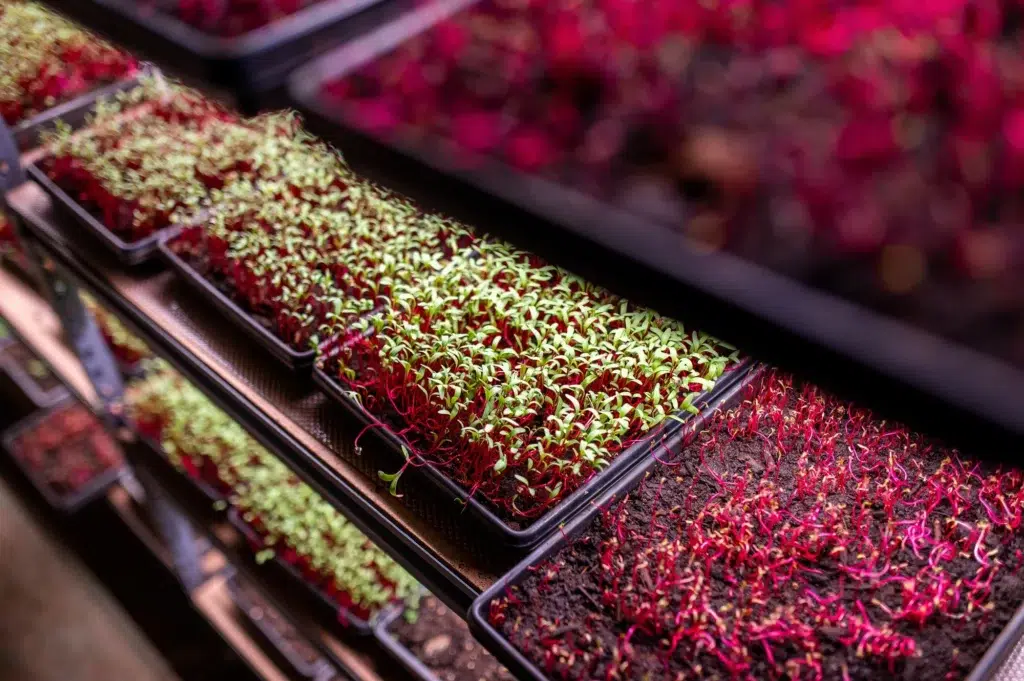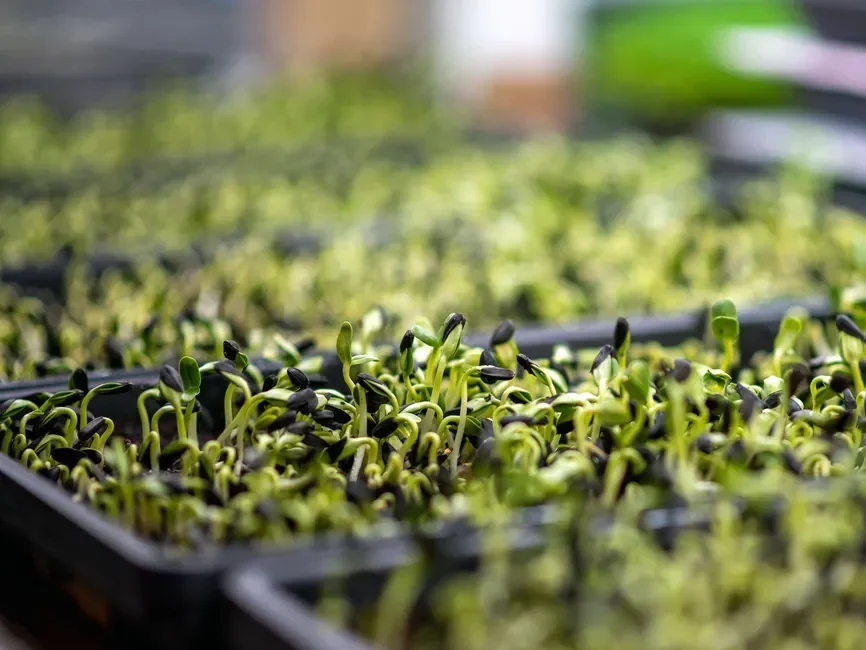Companies are refocusing on specific crops after a spate of Chapter 11 filings
By: Georgia Hall
June 17, 2025 at 9:16 AM PDT
Welcome to The Brink. I’m Georgia Hall in New York, where I looked at vertical farming companies bouncing back after a string of financial debacles. We also have news on Southern European banks, Essity and New World. Follow this link to subscribe. Send us feedback and tips at [email protected].
Microgreens and Berries
After a spate of bankruptcies, the high-tech vertical farming industry is turning to trendy microgreens and berries to make their operations profitable.
A wave of Chapter 11 filings hit the sector in 2023, as previously-hot startups like AeroFarms and AppHarvest grappled with high interest rates and investors became antsy about when they would see returns. Plenty Unlimited, backed by Jeff Bezos and SoftBank, filed for bankruptcy this year after being unable to raise more equity.
“Vertical farms are very capital intensive projects and these business models were not profitable,” said Adam Bergman, managing director at boutique investment bank and consultancy firm EcoTech Capital. Farms use robotics and artificial intelligence to create year-round growing conditions, and are expensive to set up and run.
Bottom of Form

Trays of microgreens in a vertical farm. Photographer: James MacDonald/Bloomberg
Fundraising for so-called controlled-environment agriculture fell below $250 million last year, Bergman estimates, compared with around $2.8 billion in 2021. Overall, about $2.2 billion of capital was raised by now-bankrupt companies, according to data compiled by EcoTech. “As companies failed to perform the capital disappeared,” Bergman said.
But some in the industry are getting a new lease of life by refocusing on specific produce. The use of LED lights in a tightly-controlled, pesticide-free environment allows for consistent growth of sensitive crops like microgreens and berries — something less easily achieved in traditional greenhouses or outdoor farms.
AeroFarms emerged from Chapter 11 with a restructuring plan that focused on growing microgreens in its Danville, Virginia, farm, which is now profitable.
“Microgreens were a differentiated product,” said Chief Executive Officer Molly Montgomery, who was appointed to lead the company after its bankruptcy. “It is highly nutritious, has versatility of use, great taste, and offers a long shelf life which means it can be sold in retail stores.”
It’s also helped that the tangy leaves have become a regular feature on high-end restaurant menus. And in grocery stores they’re often now a part of the main salad section — instead of being sold with herbs and garnishes — further boosting sales.
Plenty, meanwhile, shifted its entire focus to strawberry production at its vertical farm in Richmond, Virginia, while shutting down a facility that grew leafy greens in Compton, California. The firm’s bet on the popular fruit was supported by some creditors, with affiliates of One Madison Group and SoftBank offering debtor-in-possession financing to prevent the company from shutting down.
Still, other entrepreneurs in the sector say the model can work without a complete overhaul, as long as businesses use existing technologies rather than spending too much of their initial funding on developing new ones.
Mike Zelkind, the co-founder of indoor farming company 80 Acres Farms, said growing leafy salad greens alongside other fresh produce has worked because they aren’t trying to completely reinvent the wheel.
“We’ve been working on unit economics from the moment we started because we came out of the food business,” he said.
Source: Bloomberg – Vertical Farms Bet on Berries, Microgreens After Bankruptcies

